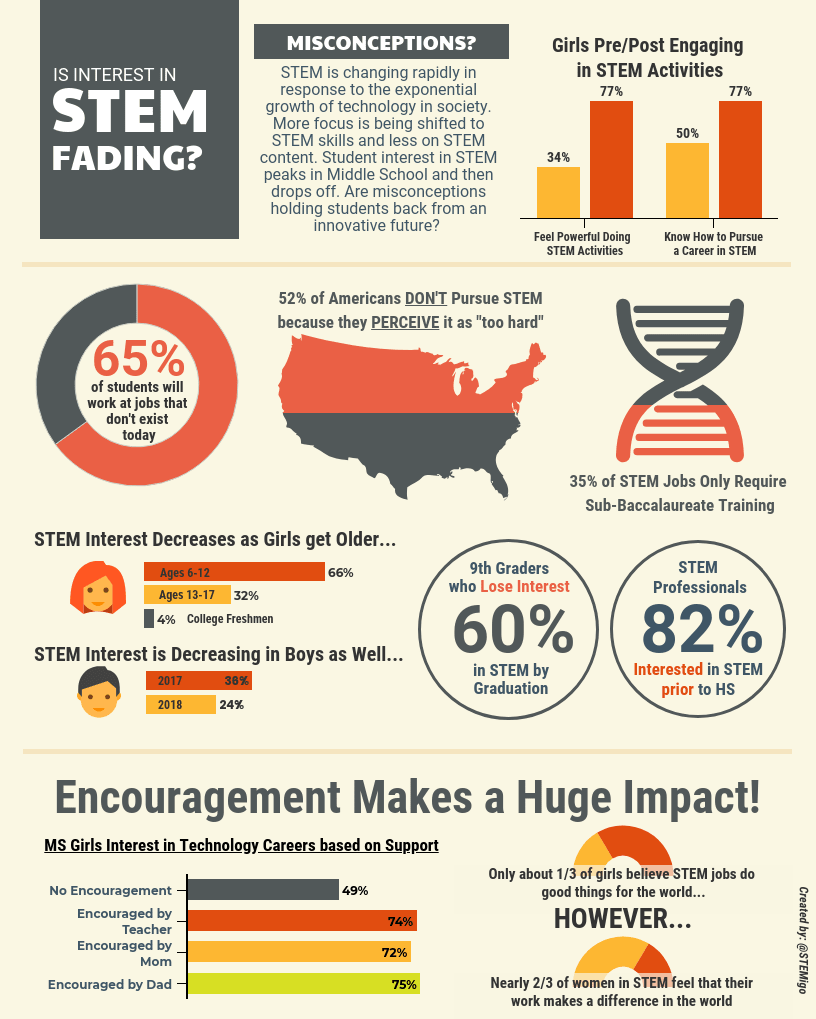
Experts and researchers have pushed for a more comprehensive definition around a culture of learning and involving transdisciplinary content connections. Many government entities pushing STEM are hyper-focused on careers in old school STEM silos, which is what they can try to support. However, without a clear definition, how do we accurately measure interest?
Some surveys try measuring STEM interest by using an antiquated siloed approach where if students are interested in science, mathematics, engineering, or technology it must mean they are interested in STEM. But does this make sense? If the definition of STEM has moved past the siloed approach, why do we try to measure with a siloed tool?
Some surveys have used careers as an indicator of STEM interest. Marian Wright Edelman stated, “You can’t be what you can’t see,” which begs the question; if students don’t understand or connect to careers, is this a valid indicator?
Many of these career surveys utilize the National Science Foundation and the U.S. Bureau of Labor Statistics as sources for STEM careers; which in both instances focus on siloed advanced degrees. If 35% of STEM jobs only require sub-baccalaureate training, is it fair to focus on only the advanced degrees?
Regardless of the survey used, there are some important takeaways when you dig into the meta-data. One such point is the fact that as girls progress through their schooling, they become less interested in STEM. In high school alone, 60% of girls who were interested in STEM as a freshman are no longer interested by graduation. Could this be due to the fact that 35% of high school girls feel as if they get no support in STEM?
Support is critical, especially in the middle school and high school years where self-perceptions are being solidified. Girls who received encouragement from their teachers saw a 25% higher chance of exploring a STEM pathway through high school and into career or college.
Misconceptions and breaking misconceptions impact student’s perception and interest in STEM. 52% of Americans don’t pursue STEM because they perceive that it is “too hard”; and for many individuals perception is reality. 80% of students make a conscious decision by 8th grade whether they think they are good at math and science; but it’s important to note this decision is based on their perceptions of math and science and not their own ability.
These are misconceptions that are embedded in our culture, that math is hard, and science is for the “smart” kids. However, seeing is believing. 77% of girls feel powerful and smart after taking part in STEM activities, up from 34% prior to the activity.
We need to help students see that STEM is beyond content. It’s about using creativity, critical thinking, and other skills to solve real problems and bring change to the world, but only one-third of girls know this.
When STEM was all about content expertise, it was easy to measure, and students could form a concrete understanding of what STEM looked like in their future. With STEM evolving, it is harder for accurate measurements to be collected as students in one class could be digging into STEM as a culture encompassing multiple content areas while another class could understand STEM to be a bunch of disjointed tasks and technologies that only happen in isolation.
STEM has become more abstract and with so many definitions students may not truly understand what they are being asked. You would be hard-pressed to find a student who wasn’t interested in working in an industry that uses STEM skills, innovative technologies, or STEM thinking dispositions; the disconnect between STEM as a definition, student understanding of STEM, and what it looks like in the real world has just muddied the waters.


